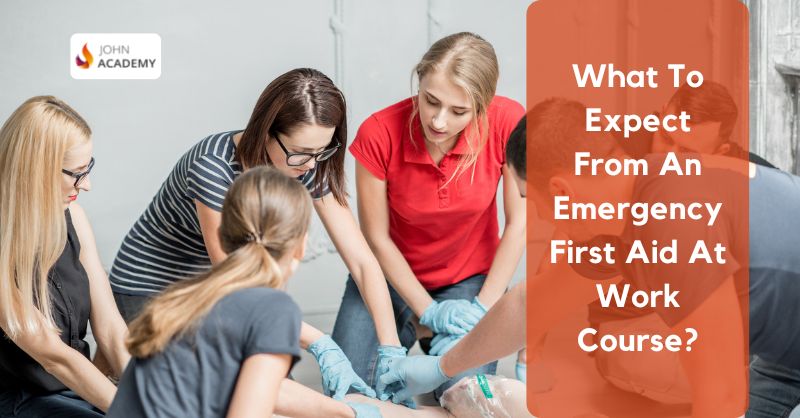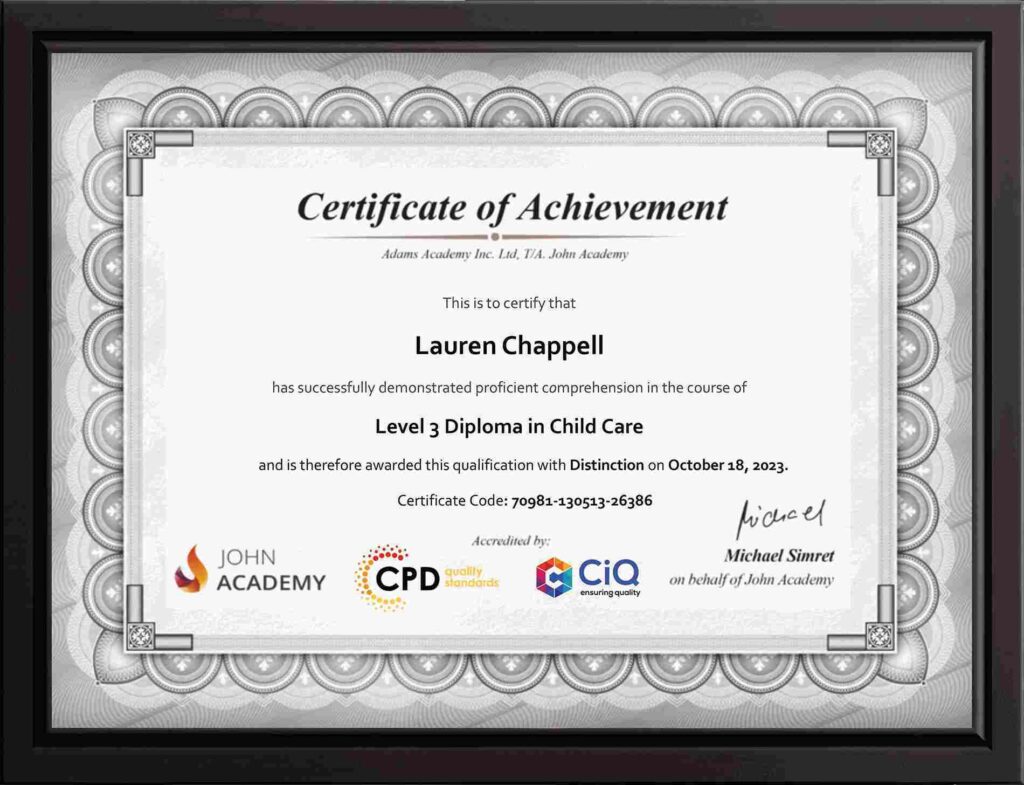
Advance Medical Treatment for Skin: Know All the Ins and Outs in 2024!
Imagine being able to improve the health and beauty of your skin with high-tech tools and new medicines. Specially in

Medical emergencies can happen to anyone anytime, especially in workplaces where people usually spend 8 to 10 hours or more of their days. Emergency first aid at work training allows employees to learn adequate and needed skills that can anytime be useful during events that need life-saving. Their learnings can be applicable inside and also outside the workplace. But what to expect from an emergency first aid at work course?
The goal of emergency first aid at work is to allow you to save lives during a medical event. You can apply this knowledge to co-workers, customers, clients, friends, family members, or anyone in need.
You will gain skills and competencies that prevent you from panicking but instead react accordingly and on time. In addition, you’ll learn the proper techniques and competence needed to provide the initial care needed to save a life until emergency responders arrive. The matter of minutes or seconds between the incident and the arrival of the ambulance could make a significant difference. This is why emergency first aid training is essential.
Based on Health and Safety (First-Aid) Regulations set in 1981, an employer has the legal duty to supply appropriate and up-to-date facilities and equipment. This will ensure every worker receives immediate care if they are injured or get sick at work. Non-employees, though not required, are also recommended to be included in the assessment for their first-aid needs.
Usually, people undertake emergency first aid courses as required by their employers and the company to comply with work policy. To perform emergency first aid in a workplace, a person should undertake the necessary training. Proper certification will prove that they have completed the course and are suitable to perform the required task in an emergency.
The emergency first aid at work course aims to provide extensive training for employees. They will learn how to apply life-saving techniques to various medical emergencies that may happen in the workplace. They try to cover every possible area involving real-life scenarios.
This course setup makes it more effective than simply reading texts as instructions, as practical demonstrations allow learners to apply these in a real-life setting. Some of these practical demos include, but are not limited to:
This involves pretending or putting oneself in a setting where one can practice body movements to understand techniques for first aid. This allows the person to know the real-life application of the process. And this could tap into their muscle memory in case of a medical emergency.
It also allows the trainee to get a feel for things. For example, how to apply proper pressure in the correct position and other instructions which may not be clearly stated in books and papers. Aside from that, they can also identify the items available in the office that can be used for emergency purposes. For instance, exit points and other important details that they can apply once a certain scenario happens.
One of the best ways to retain memory and comprehension is through question-and-answer sessions. This can be done in two ways: asking objective queries and responding with memorised facts and steps.
The second is subjective questions, which give the trainee the freedom and skill to think of their answer. It can be based on what they should do in a given situation and what factors to consider. This ensures that they remember and understand critical details about the course.
Another technique used in emergency first aid training courses is using a mannequin. It allows trainers and trainees to perform procedures such as cardiopulmonary resuscitation (CPR). The mannequin is usually human-sized. And it has features that can specify airflow and have the feel of human tissue, allowing more training for realistic procedures. These mannequins are provided by emergency first aid trainers.
These practical demos may vary according to the trainers and providers. But usually follows a similar path as these are proven to be the most effective techniques in teaching first aid. You’ll learn these techniques if you undergo emergency first aid training at work to complete the course.
During training, several skills are expected to be acquired from the study, which are necessary for medical emergencies. At the end of the training, the employees are expected to learn these skills and competencies. Employees must become familiar with various techniques applicable to certain medical situations. The skills are, but are not limited to:
Before performing any task, it is necessary to know the situation to provide the proper procedures. During the emergency first aid training course, the employees are taught the process of assessing the situation, listing details and techniques, factors, causes, and other things needed in the report.
Th trainee must memorise how to conduct assessment at all times. This skill allows the team member to be able to calmly observe the situation and think of the steps and techniques better.
Aside from the initial assessment, you must keep track of the situation and note the changes in victim over time and you should include them in the report. Changes in a medical situation could mean life and death in many cases, which makes monitoring a valuable skill to have.
Getting cuts and scrapes ranging from small ones to large gashes are one of the medical emergencies. So, techniques for controlling bleeding are critical skills in emergency first aid training. Most of the time, the bleeding, not the wound itself, causes further damage, and blood loss is fatal in accidents.
With the proper training during the course, emergency first aiders can learn how to dress and treat wounds. They’ll also learn to prevent further bleeding, and know how much bleeding is normal and hazardous.
Another common emergency that can happen anywhere is an incident of choking. This case may be on food, saliva, or any foreign object that blocks the airways and prevents the lungs from inhaling air. Response time in choking incidents is critical, as asphyxiation can occur in a matter of seconds which could be fatal for the person.
Different techniques and a practical demonstration are presented to the trainees. They can apply the techniques if someone in the workplace ever experiences choking.
If someone has a medical condition or happens to have an episode where they have a seizure, this can cause panic among those untrained in this situation. Emergency first aid training course at work provides an avenue for the trainees to learn the proper step-by-step procedure during this kind of situation.
Seizures are typical and will go away on their own. However, the compromised position and uncontrolled movement can be dangerous to the person experiencing the episode. Learning this skill can be a helpful tool that can save a lot of lives from experiencing complications due to this incident.
If done correctly, cardiopulmonary resuscitation (CPR) is a valuable technique that saves many lives, especially those in life-and-death situations. However, this procedure should be performed correctly by someone trained in doing so. Acquiring the skill to perform CPR properly can be helpful in the workplace in case of an emergency while waiting for first aid responders.
Although it is also a form of a wound, burns are treated and aided differently as they have different needs compared to injuries such as cuts. Assessment of the burn and knowing what to use on it and how to apply the necessary first aid is a helpful skill. Also, knowing whether a burn is from a fire or hot surface source or a chemical and being able to tell the difference is a skill that emergency first aiders should obtain.
In the United Kingdom, The Control of Substances Hazardous to Health Regulations is a law imposed on the general requirements of employers to protect the workplace and other people from substances that may be hazardous to health and reduce worker exposure. In the event of a medical emergency including these substances, the emergency first aiders at work should know how to control, decontaminate, and prevent further effects of the chemical.
If your company or office announced that you would participate in emergency first aid training, be sure to prepare comfortable and non-restricting clothes. This includes simple shirts, including the one you can change into in case you need it during practical demonstrations. An extra shirt wouldn’t hurt, as the training usually lasts 6 hours or more.
For bottoms, pants are the best option as shorts are inappropriate and could be restrictive, as well as skirts. Choose bottoms with good fit and flexibility, as you may need several physically demanding movements during the course.
Aside from your usual office supplies, bring an extra notepad to write instructions and lessons presented in the course. Taking notes allows you to review these during your spare time or check facts and details during an emergency. These notes will also be helpful during your assessment and prepare you for the demonstration.
There may be some other things you must bring depending on what is requested and specified by the announcement, and being prepared will always be the best option.
Once you have completed the course and passed the assessment, you are expected to be one who can respond to an emergency in case it happens in your workplace. Combined with your skills and learnings, some of the tasks and responsibilities expected from you are:
It’s important to know where the supplies are and the pathways in any emergency situation. The location and availability of these types of equipment and supplies will be the whole workplace’s responsibility. And everyone should ensure that these are available and accessible at any time. Trainees must also know how to use this equipment and supplies properly and efficiently in time of need.
After gaining the skills and knowledge during the course and passing the assessment, certification of completion is given to the trainees. These certificates prove that a person can carry out the techniques in a medical emergency. Therefore, if someone gets ill or injured and needs help, these certified emergency first aiders are expected to perform tasks to help according to their training.
An emergency first aid provider should be able to tell whether the situation needs professional medical services and be able to call them in case of an emergency. Trainees are expected to know and memorise emergency numbers in their locality and the location of the nearest medical station or hospital.
Most importantly, they must recognise that emergency first aid is only temporary and not a permanent or the most effective solution in case of a situation involving emergencies, and it is still best to call for an emergency service.
The point of first aid training is to give employees the necessary knowledge in case a medical emergency occurs in the workplace. By the time primary responders and the ambulance arrives on the scene, emergency first aiders are expected to be able to report the situation and carry out an initial assessment correctly.
First aiders must be able to communicate the techniques and procedures they have done in the meantime while waiting. This allows the responders and professionals to know which steps to take afterwards.
Aside from the responsibilities mentioned, the most basic requirement from someone who underwent these emergency first aid training at work is to be able to help people in need at any given time, whether it be co-workers, clients, or customers.
Once the workplace offers the opportunity to conduct an emergency first aid at work course, you should grab this opportunity. They will teach different skills during the training, and the trainers will use various techniques to ensure that the information is retained clearly and adequately. This opportunity gives the trainees the competency and responsibility to carry out these tasks by being certified emergency first aiders.

Imagine being able to improve the health and beauty of your skin with high-tech tools and new medicines. Specially in

Sooner or later, every small business understands that business goals require more than just Excel spreadsheets and business email. Effective

Companies and organizations across different sectors have recently adopted digital business operations. And with the current trends, more businesses embrace

Are you a university student overwhelmed by the mountain of assignments looming over you? Fret not! In this guide, we’ll

Cooking frozen food is not only a great time saver but an excellent way to minimise food waste while indulging

In recent years, the allure of photography as both a hobby and a professional endeavour has surged remarkably. For many,
No more than 50 active courses at any one time. Membership renews after 12 months. Cancel anytime from your account. Certain courses are not included. Can't be used in conjunction with any other offer.
